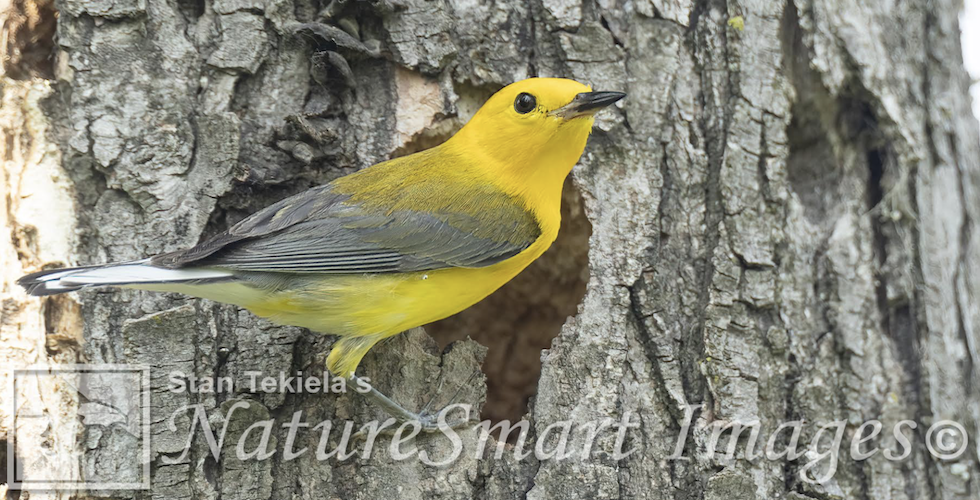
Warblers: Both Interesting and Frustrating to Observe!
There is a group of birds that many people find very interesting and yet, at the same time, very frustrating. These are the warblers. Stan Tekiela, wildlife photographer and naturalist, tells us why.
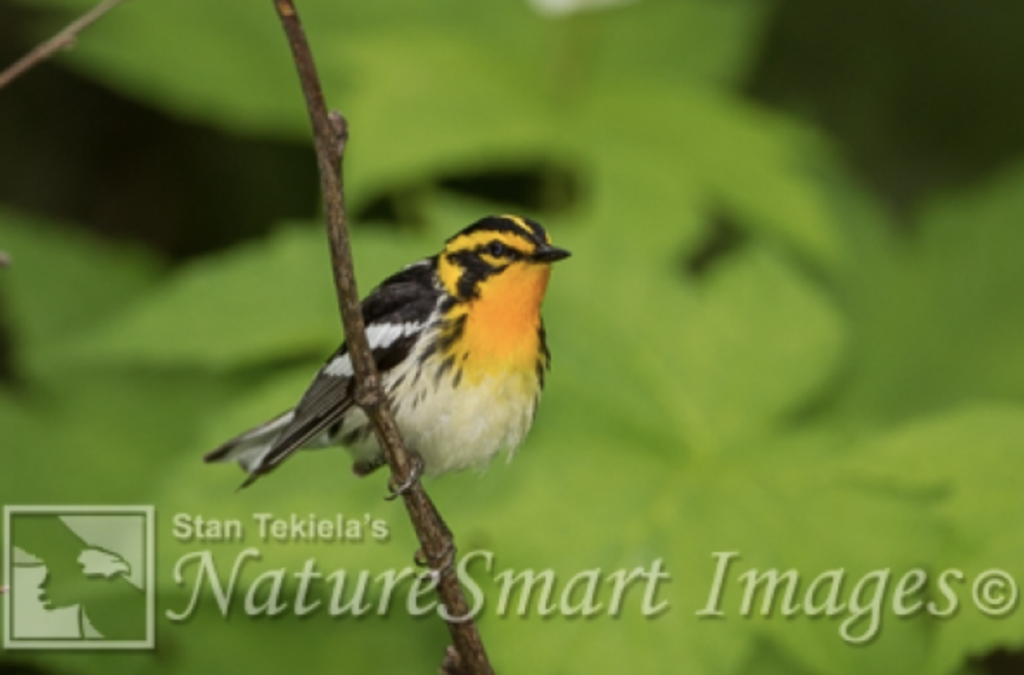
The New World Warblers, sometimes called Wood-Warblers, are an interesting group of birds that are often brightly colored and small, and they spend much of their time at the tops of trees. The bright colors are why many people find them interesting to look at, but their tendency to hang out at the tops of trees makes them difficult to watch and to correctly identify.
Warblers are unique to the New World, which refers to the Americas—North, Central, and South America. Our warblers are not closely related to the Old World Warblers or Australian Warblers found in Europe, Asia, and Australia. Most of these birds are arboreal, feeding high up in trees and building nests in the upper branches of tall trees, but a number of species feed, live, and nest on the ground.
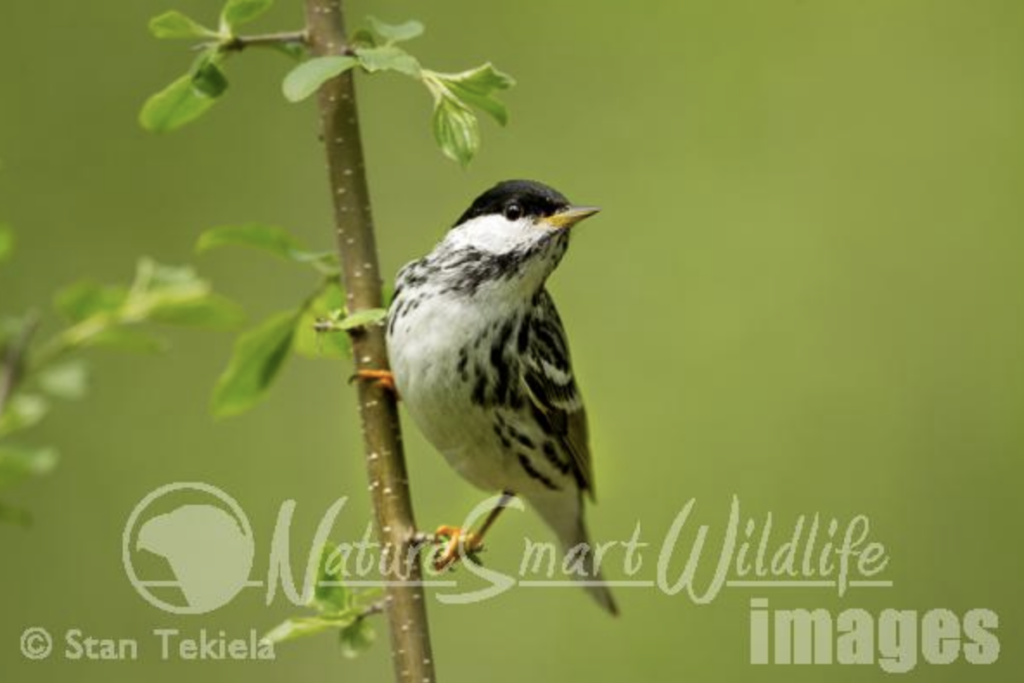
We have 53 different species of warblers in North America. There are many more in the tropics of Central and South America. Our warblers are highly migratory and move up into the northern tier states and Canada for nesting, then return to the tropics for winter. Most of our warblers are highly migratory.
Most warblers have complex and pleasant-sounding songs. Typically, the male is the songster and belts out a loud and musical song in spring to attract a mate and to announce he is willing to defend his territory. Warblers also have a variety of calls. Calls are different from songs. Calls are usually a single sharp note that is given when the bird is alarmed or threatened. These “chip” notes are given by both males and females, while males tend to be the songsters.
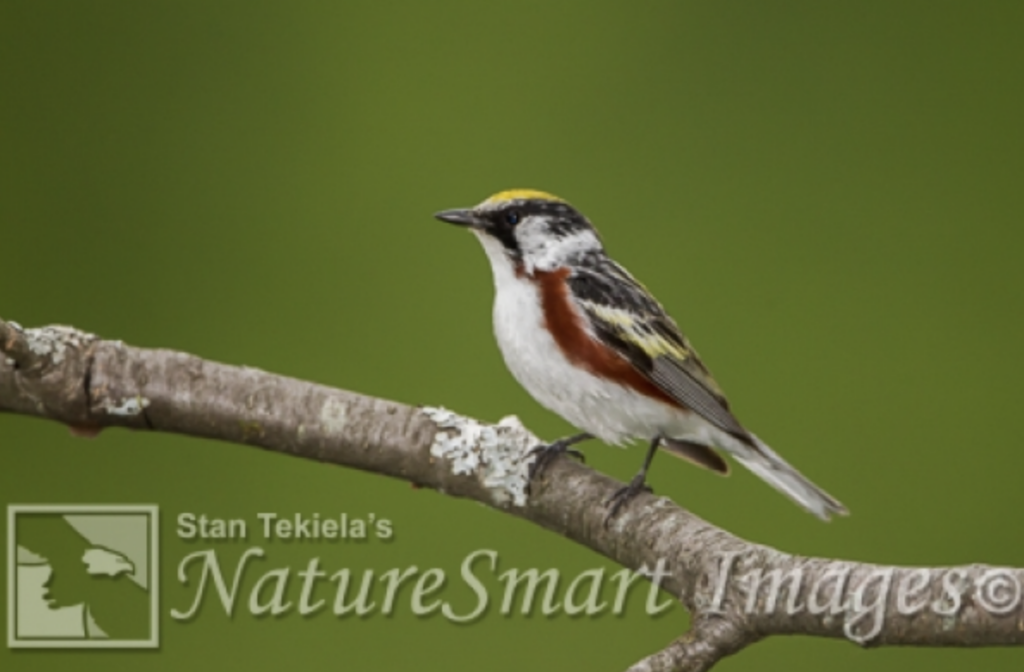
The songs of warblers tend to be loud and clear. Birds who live, hunt, and nest close to the ground tend to have lower-pitched songs. The low pitch helps the song carry across the forest floor. Birds that live and nest high in trees usually have higher-pitched songs—with sounds that travel farther with fewer obstacles. Basically, bird songs are optimized for the habitats they live in.
Warblers tend to be small birds, usually under 7 inches in length. Our New World Warblers are often brightly colored; males tend to have flashy colors and females trend towards the duller side. In spring, it is often easier to identify the warblers migrating through your area because of the brightly colored feathers. But in fall, many of the warbler species molt into nonbreeding plumage, making them all look similar and very difficult to distinguish between the species.
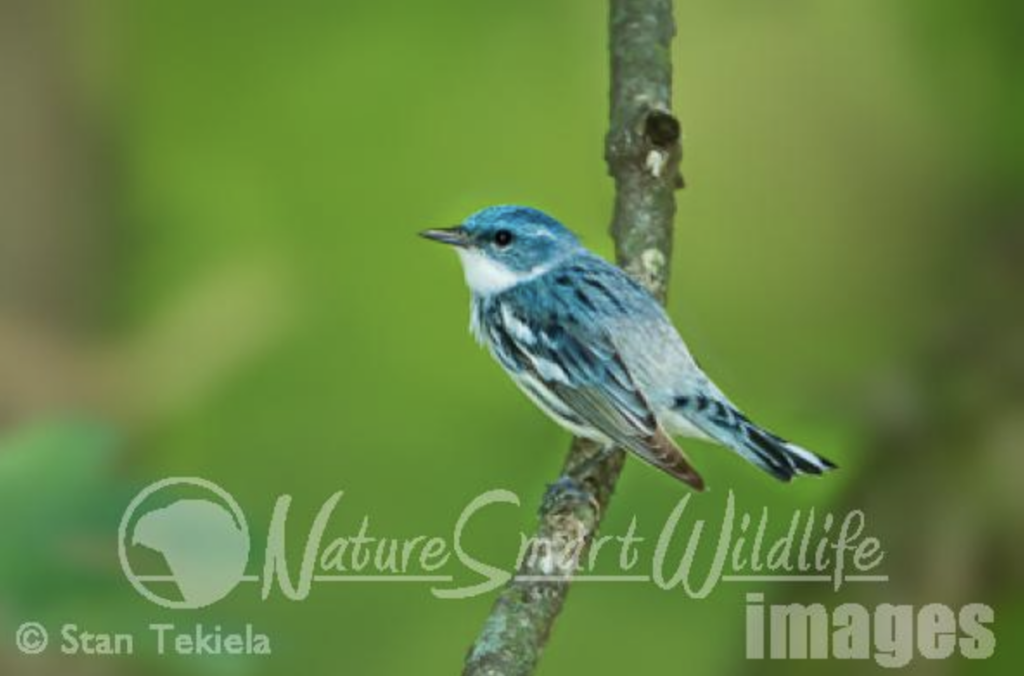
All of this info about warblers was rushing through my head the other day while I was photographing one of the more interesting warbler species. A friend of mine let me know about a pair of Prothonotary Warblers (Protonotaria citrea) nesting nearby. I dropped everything and went to see them because this is a very interesting bird species. The Prothonotary Warbler is the only warbler species found in the eastern half of the country that nests in a natural cavity. They can also be attracted to wooden nest boxes. They often nest in old woodpecker cavities but are also known to nest in other natural cavities. Although it is often stated that they can excavate their own nest cavity in a rotten stump, I find this highly unlikely due to the size and shape of their bill. They are insect eaters and have a small, thin bill, which is designed to capture insects and not great for excavation.
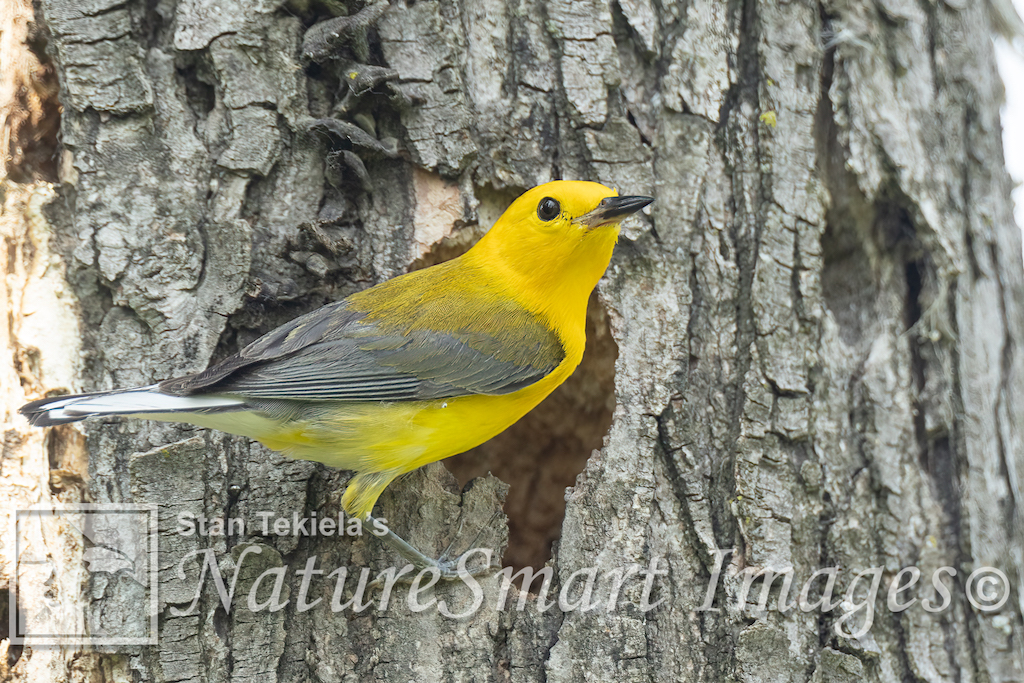
The name “Prothonotary” comes from the Byzantine court, official scribes in the Catholic church, whose members wore golden-yellow robes. Both the male and female Prothonotary Warblers are bright yellow in color, but the male is noticeably brighter. These birds breed mostly in hardwood wetlands, usually in flood planes of major river bottoms.
It didn’t take long after I arrived in the flood plane forest to locate the pair of warblers. The male was singing loud near the nest, and it was not difficult to spot these brightly colored birds. Both the male and female were feeding the babies and coming to the nest cavity every 5 minutes or so with a wide variety of insects. On each visit, the parents would reach into the cavity to feed the young inside, which allowed me just enough time to capture some fabulous images of these super colorful warblers.
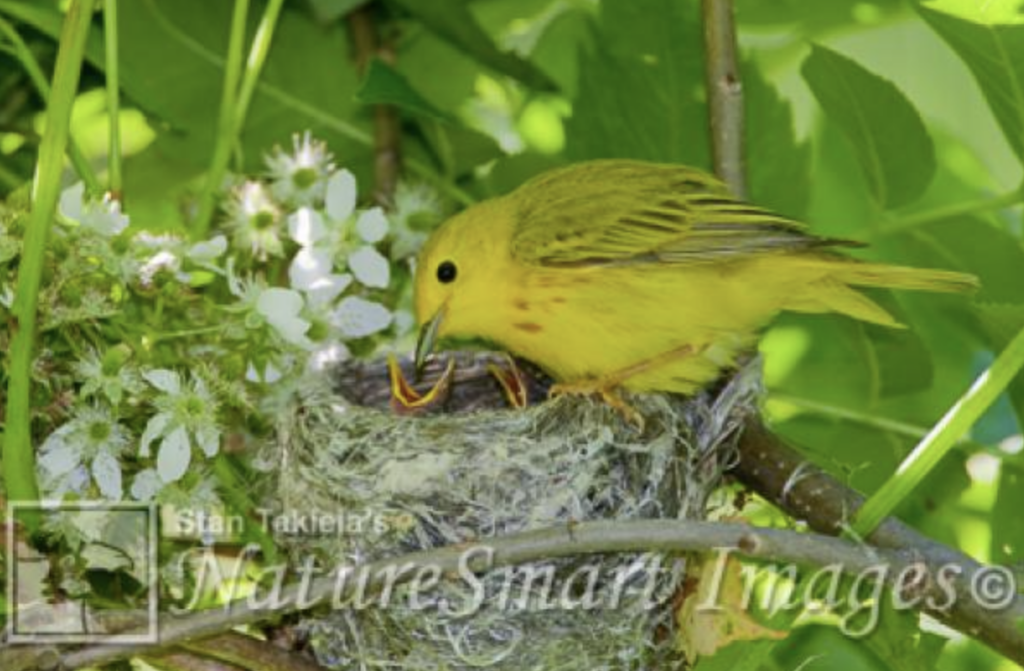
If you enjoyed Stan’s post, you may enjoy one of his amazing nature books: Wild Birds, Backyard Birds: Welcomed Guests at our Gardens and Feeders, and Bald Eagles: The Ultimate Raptors.
You can follow Stan on Facebook and Twitter, or contact him via his web page. Stan’s nationally syndicated NatureSmart Column appears in more than 25 cities spanning 5 states (Minnesota, Wisconsin, Michigan, Illinois, and Pennsylvania) and is circulated to more than 750,000 readers.
For more stories about wildlife and nature, sign up for our newsletter now! #bewellbeoutdoors


